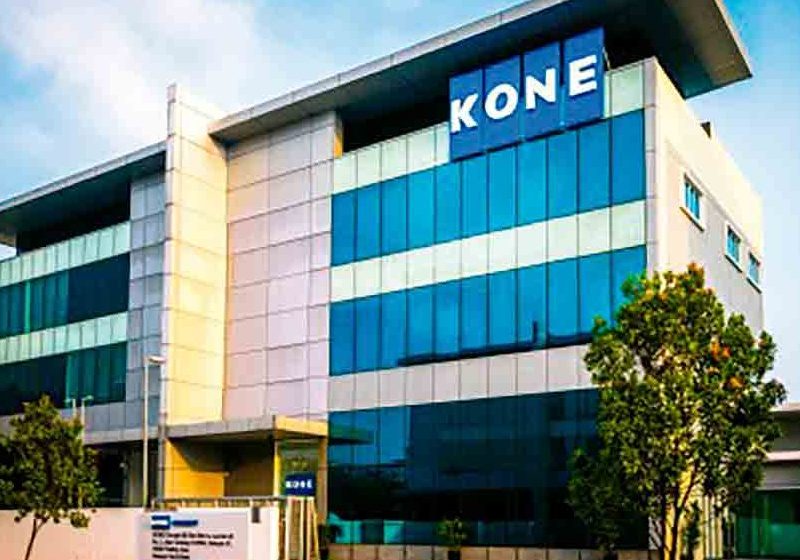Elevator Rope Lubrication
Sep 1, 2018

A new automated system that distributes lubrication at regular intervals is explored.
Lubrication is a necessary component of proper elevator maintenance. That said, today’s best practices still provide maintenance staff with some key challenges. Elevator installers and repairers already fall into a high-risk category, accounting for 70% of the industry’s serious injuries and deaths. Hoistway entry increases health, safety, security and environmental (HSSE) risk, and each additional maintenance need means risk for service personnel.
Field lubrication minimizes wear, reduces wire friction, minimizes corrosion and helps reduce rope fatigue. Current methods, however, can require multiple manual applications a year. With each manual application, a technician typically sits atop the cab with a paint roller and pail of lubricant. The out-of-service elevator is then moved 4-5 ft. at a time, while the lubricant is painted on the accessible rope. Not only is this process risky, it’s also arduous, sometimes taking 8-10 hr. per elevator. The roller application is also inconsistent in lubricant amount and often leaves slippery residue atop the cab.
Today’s automatic options can provide important improvements over manual lubrication, but they come with their own challenges. Manufacturer-mounted lubrication systems can dispense lubricant at set intervals, but they need to be refilled every three to six months. Proper lubrication is often measured by a subjective and imprecise “finger test.” A felt-pad, wick-type lubricator is also a popular option from OEMs and service providers. While these installations decrease the frequency of manual lubrication, they also require maintenance. Brushes and felt pads wear, contact points are missed, and lubrication levels are inconsistent. In theory, lubricant is dispensed from the canister, enters the brush area and is evenly dispensed across the inlets of the brush. However, industry experience has proven this is not how it always happens. Personnel have no way of ensuring lubricant is being evenly applied to the ropes, reigniting the challenge faced during manual lubrication.
Fighting the problem of inconsistent lubrication can lead to excessive lubrication. This is not ideal, as it can cause hoist rope slippage during acceleration or deceleration. A film of lubricant in the drive-sheave grooves is a good indicator of adequate lubrication, though this can only be manually checked while the elevator is out of service.
Manufacturers have provided powered programmable lubrication systems for heavy industrial applications for more than 40 years. In 2015, Castrol Lubecon adopted its system for wire- rope applications by working with a major service company in response to premature rope wear at a corporate client’s headquarters building. This “new” technology is viewed as an innovation in this industry, but it is commonplace in nearly all automotive plants and other facilities with long conveyors (and some with heavy industrial wire rope). The difference in this automatic lubrication comes from custom-fit and custom-mounted lubricators, called Lubetubes, at predetermined intervals along the wire rope. A centrally located system is then connected, and lubricant is dispensed at regular intervals, whether or not the elevator is in service. After initial installation, the need for cab riding is virtually eliminated, and the need for lubricator adjustment is absent. Additional parts replacement is also eliminated, as there are no components that need to be maintained (felt pads, brushes, etc).
The lubricant itself is an innovation, as well. It’s not the light- viscosity spindle oil generically recommended by major rope makers. The controller-dispensed lubricant, proven in extreme conditions from fiberglass-insulation ovens to steel foundries to paint shops, is a molybdenum disulphide-based dry film that has adapted well to the varying conditions of hoistways. Today’s ropes are exposed to more moisture, often passing through air- conditioned control rooms to warm, humid hoistways. This makes the rope’s core vulnerable to moisture, while air movement can consequently dry out the rope exterior.
Again, proper lubrication is critical to the protection of expensive wire ropes. Using these new automated lubrication systems, the dry-film lubricant is applied to the full length of the rope and penetrates and protects the rope’s core. The on-cycles can be set to continuous stream or rapid pulse so application is ensured. Not only does this protect the rope core, but it also reduces another pain point for mechanics. With a “dry” exterior, the rope is less likely to build up dirt, lint and other contaminants picked up in the shaft atmosphere. That, in turn, reduces the need for cleaning the ropes, which, again, is often a manual process.
Elevator maintenance is a risky business, and innovations in this space only serve to protect the health of personnel. If there is a way to reduce HSSE risk, isn’t it an option worth exploring?
Get more of Elevator World. Sign up for our free e-newsletter.









